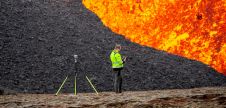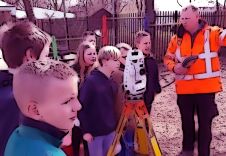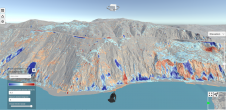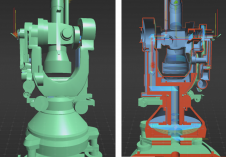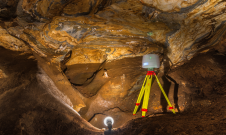Technology Continues to Surprise
本文最初发表在地理世界。
The rate at which technology evolves continues to surprise. Often something emerges in response to genuine human need, even if the need is down to a failure of government. Other times it is because those with oodles of surplus cash decide something is worth investigating – possibly with a view to acquiring yet more surplus cash – things like space tourism, autonomous vehicles or talking to your fridge.
I read the other day that Ford are developing a pothole alert system for their vehicles (www.bbc.co.uk/news/technology-39004805)。图像识别和激光扫描是可能的to be key components. Potholes are certainly a problem almost wherever you travel in the world but should ordinary road users need systems to detect them? I was on a Caribbean island recently with a vast road network, some of them as good as any in Europe but many side routes across the island or to country villages are truly appalling. In some cases, as I said to a taxi driver, it’s not so much a pothole problem as a complete absence of road problem. The island faces a general election soon and the politicians are busy vying with each other for the best solutions for its crumbling roads. Yet things are often no better here in the UK. Last year in my town one of the main spine roads through a local community was so bad many drivers were taking long detours to avoid it.
驱动解决方案缺乏维护的主要原因当然是在大约十年前全球金融危机之后的无尽预算削减和紧缩政权。在美国,新政府表示,他们将解决该国崩溃的基础设施。毫无疑问,将会有大型标题项目,但我敢打赌,没有人会预算足够的维护。我们才刚刚开始了解到,填补坑洼和绘画东西有选票。
Intriguing is how technologies that evolved many years ago suddenly get new legs due to developments in other fields. Photogrammetry is an example. All surveyors understand the basics of how to get measurements from stereoscopic photographs. Before the advent of laser scanners plate cameras enabled façades of buildings to be accurately recorded. Now, thanks to rapid processors, clever algorithms and solid-state devices we can attach miniature sensors to a UAV and achieve amazing results as Dr David Green and his colleagues demonstrate in their article Photogrammetry aids River Restoration (page 14).
Another emerging development is smart headsets that enable the user to view the world through enhanced virtual reality. One such device is being trialled on construction sites. Equipped with a high-speed wide-angle camera, it can show how a new building will blend with its existing surroundings or it could superimpose a 3D image of the position of existing or planned underground services. Contractors Skanska are trialling the device. Watch this space.
斯蒂格·埃马克(Stig Enemark)教授授予2016年迈克尔·巴雷特(Michael Barrett)奖演讲,认为有效的土地管理为实现了2030年联合国的可持续发展目标做出了贡献。他引用了中国的巨大进展,部分原因是土地改革。他希望看到到2030年到2030年的30%到80%的世界的比例。阻止这一国家没有足够的测量师或政治意愿不致力于改革的国家。阅读他在第18页上的讲座的报告。Prisoners of Geography。Read our report of his lecture at RICS and a review of his book on pages 30 and 31.
Finally, I want to alert readers to our sister publication GIS Professional which is planning a major feature on the state of geospatial education and training for the April issue. To make sure you get a copy go towww.gis-professional.com
本文发表在2017年3月/4月的地球世界上






